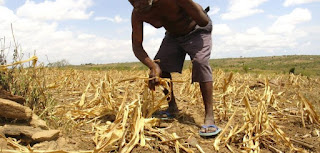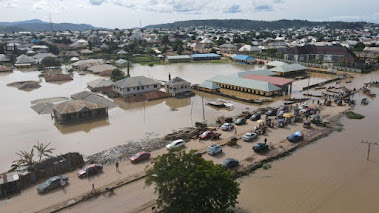Drought and groundwater
Backbone of Society
Kenya's agricultural sector has been described as "a crucial backbone of Kenya' economy", employs 75% of the working population and 65% of total exports. Most of the farming in Sub-Saharan Africa in general is dominated by smallholder farms. Whilst estimates of 70-80% have been proposed by the media, there is little evidence to suggest this is true.
What is true is 98% of these smallholder farms are rain-fed instead of being irrigated, and erratic weather patterns is one of the biggest challenges facing these farmers. A 2018 study found that that understanding patterns of weather in Kenya is key to economic stability. Historically, farmers in these regions have been able to tolerate Kenya's rather erratic weather but with an increasing levels of inconsistency, can these smallholder farms survive?
Most research in the impacts of climate change point towards an overall decrease in rainfall patterns as well as an overall intensification of the hydrological cycle. Droughts can cause huge downturns in the overall agricultural production. The increased risk of drought as a consequence of rising global temperatures means these typically rain-fed agriculture areas need to secure water from other sources than rainfall. Whilst it is growing in popularity, smallholder farms generally have access to resources that allow them to commit to deep drilling projects.
 |
| Figure 1: Showing the percentage change in the Kenyan agricultural sector with major drought events. Source: World Bank Group "Kenya Agricultural Risk Assessment 2015". |
Groundwater abstraction
UPGro, an African groundwater research project, has found that Kenya has groundwater storage capacities of upwards of 619 million m³, with it's total safe abstraction rate being about 193 million m³/ year. Whilst this seems like a huge amount of potential water, the current total year water usage of Kenya has been rougly estimated to be around 4.1 billion m³/ year, suggesting that it's not going to be anywhere near enough to cover the country in severe episodes of drought.
It's also worth considering that large parts of Kenya are reliant on groundwater wells for access to safe drinking water. Removing large amounts of groundwater will result in a reduction of the water table and potentially remove access to drinking water for swathes of people. Kenya currently has a Groundwater Conservation Act but this is often overlooked. This in turn increases water stress and could force people into drinking polluted or unsafe surface water supplies.
Groundwater pollution
In these rural agricultural areas, there is generally poor sanitation. Lack of sewerage systems means people are using septic tanks or pit latrines. From here, it can infiltrate the groundwater system. In the same areas, farmers are using pesticides and fertilisers. Removing groundwater allows more run off from irrigation schemes to infiltrate the groundwater system. All of these will further increase the likelihood of someone using the groundwater for drinking water to become sick.




Comments
Post a Comment